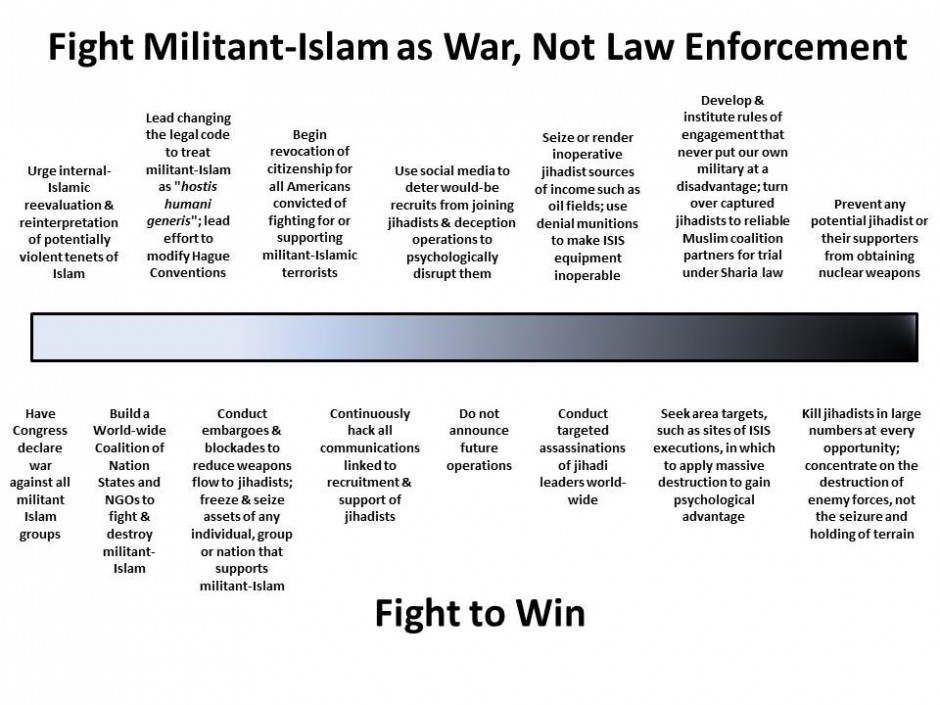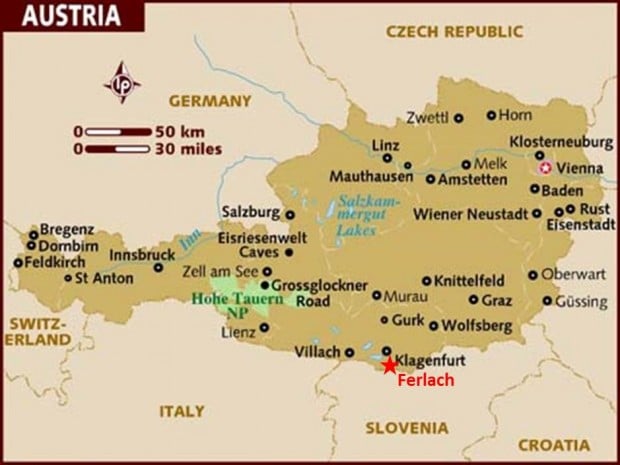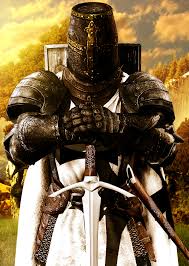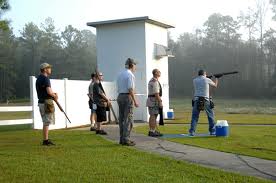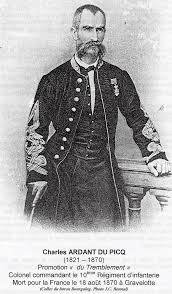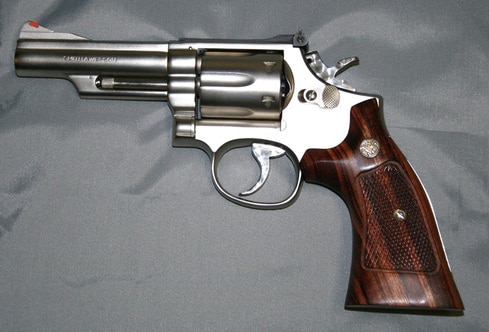Johann Fanzoj and Ferlach, Austria
The art of gun-making in Ferlach dates back to the 16th century. Austria’s southernmost province, Carinthia, became threatened by periodic attacks from the Venetians to the southwest and the Turks from the southeast. To defend the valuable area, Holy Roman Emperor Ferdinand I ordered that a powerful arsenal be built in the major town of Klagenfurt; the project was completed in 1566 by his son Maximilian II. Max decided that he needed an arms industry that would trump the Trompia Valley center that supplied the Venetian Republic. Thanks to the nearby natural resources of iron and timber, water from rivers cascading down the Karawanken mountains and an already well-established workforce of skilled iron- and metalworkers, a weapon industry evolved that would soon become world famous. For more than nine generations the Fanzoj family has played a significant role in shaping this proud tradition.
In the early days, weapon production was organized as a “house industry.” The manufacturing process was divided strictly into several different tasks. Every master gunsmith had a specialized skill and a weapon went through many a master gunsmith’s hands before it was offered for sale. Master gunsmiths learned the trade from their fathers, and passed the knowledge on to their own sons.
In 1750, having moved to the valley (known as the Dale of Roses) from Holland, the name Fanzoj appeared in the chronicles for the first time as a local gunsmith; this was the same year as Holy Roman Empress of the Habsburg Dynasty Maria Theresa created the first set of guild rules for the gunsmiths of Ferlach. A 1781 census showed that there were 203 master gunsmiths in the village. By 1793, Emperor Francis II granted an exclusive trade mark to the Guild of Ferlach Gunsmiths to protect the “authenticity and quality of the arms from Ferlach.”
By 1845, the number of gunsmiths in Ferlach had grown to 308. By 1876, the craftsmen founded the “Association of Master Gunsmiths,” en elected body that helped procure parts and distribute profits. Two years later, the “Imperial Professional School for the Arms Industry” was founded. One of the future leaders of the Fanzoj firm, Johann Fanzoj, received a Certificate of Gunmastership in 1885. Over the next two decades, Ferlach ceased manufacturing military weapons and began to concentrate on hand-crafted hunting rifles, shotguns and combination/drilling guns.
In 1906, Johann Fanzoj (VI) designed the Ischler – a short, lightweight, single-shot rifle with an external striker – which he dedicated to Emperor Franz Joseph I of Austria, who was a passionate and prolific hunter. The Ischler reportedly never left the Emperor’s side on a hunt and Johann Fanzoj often accompanied him during his legendary hunts. Johann thus became a Purveyor to the Imperial Court of Franz Joseph I.
In the last century, World War I and II hit the Fanzoj family hard economically, with some family members even emigrating to the United States of America during the Depression Era (there were 308 gun-makers in Ferlach in 1934 which dropped to 80 in 1946), but after a short period of stagnation in 1945, the demand for hunting weapons rose once again. Even during the peak years from 1965 to 1980, Fanzoj produced only up to 200 weapons per year. Johann Fanzoj (VIII), then Senior Manager, saw the handwriting on the wall and succeeded in expanding the company to world-wide recognition with new areas of business and trade by contracting production volume even further and concentrating on the top of the top of the line.
Due to his untiring dedication, innovative commercial talents, and investments in the production facilities, Fanzoj weapons today delight hunters around the world. It did not hurt that he became the first Ferlach gunsmith to go on a safari to Africa in 1969 and on his return initiated the era of large caliber double rifles in Ferlach; these quickly became highly esteemed working tools valued among professional hunters in Africa – weapons that could be relied upon in true life and death situations. By 1989, the number of gun-smiths in Ferlach had dropped to 56. Johann Fanzoj continued to be a highly-regarded member of international hunting associations and ethical commissions, and served as the Prior of Carinthia for the International Order of St. Hubertus.
In 1998, Daniela, the daughter of Johann Fanzoj (VIII), succeeded him as company director, after studying in the United States, Russia and Croatia. Together with her younger brother Patrick, an accomplished engineer in charge of the manufacturing process, they form a young and dedicated team that has forcefully implemented their commitment to handcrafted products of superior quality, adding two showrooms – in Zagreb (Croatia) and Ljubljana (Slovenia) and strengthening the firm’s image as international experts for hunting and shooting worldwide.
The company takes on only about 20 commissions each year as a custom-made firearm can take as long as three years to design and craft, ranking among the very best in the world and demanding premium prices. Basic models start at €40,000, but custom-designed rifles cost more than 10 times that amount. These prices, in turn, have elevated older Fanzoj weapons into protected heirlooms and highly-desired flawlessly functioning weapons of masterful craftsmanship worth far beyond their original price, when they do appear on the market.
The Fanzoj philosophy is quite simple but elegant – build fine hunting arms – unique, individual pieces of highest artistic and technical value – handcrafted by true masters of their trade with only one goal in mind: to realize the personal vision of the individual Fanzoj customer.
The company is managed by family members who love hunting and have a deep understanding of guns and what a hunter requires of his or her gun. They continue to design and build every precious part of a Fanzoj with one thing in mind – the hunting experience. Currently, there are eleven gun-makers (among which is famed master gunsmith Florian Mutenhaler) and craftsmen that work at the Fanzoj facility in Ferlach. Average gun-making experience per worker is 25 years. Fanzoj weapons have been purchased over the years not only by Emperor Franz Josef, but also former U.S. President George H.W. Bush, Yugoslavian President Josip Broz Tito and Russian President Vladimir Putin.
The Fanzoj firm works in the niche where most of the very few remaining high end producers of hunting weapons cannot follow. This is because every single piece of their guns is crafted meticulously by hand and that continues to make their products a worldwide success. Additionally, many Fanzoj creations stretch existing technological limits, for example, in their new bolt action Mauser 98 that they construct not of steel – as had been done since the gun’s inception over 100 years ago – but of titanium.
This particular example of a Johann Fanzoj weapon was made in 1962, a combination over-under gun (known as a Bocksbüchflinte) that married a shotgun with a rifle. This Fanzoj 16-gauge/7x57R, serial number 21 822, has an additional number 2461.62, which means that it was the 2461st gun to be inspected and proofed in Ferlach that year of 1962. Featuring double triggers, it has a 14 inch length of pull; overall length of the weapon is 40 inches. The drop at comb is 1 ¾ inches; the drop at heel is 2 ½ inches. Without the scope, the weapon weighs 6 pounds and 9.6 ounces. Concerning the triggers, known as a German stecher system, the rear trigger is used to lighten the pull and to cock the front trigger. Once engaged in this manner, the front trigger will fire with just slight pressure, increasing accuracy.
The 16-gauge shotgun upper barrel is marked Böhler Blitz Stahl and rifle barrel is marked Böhler Blitz Stahl Spezial G55; it is chambered for 2 ¾ inch shells. The stock is made of dark European walnut; front and rear sling swivels provide a solid point of fixture for whatever sling the owner desires; the butt of the weapon has a horn plate to provide snag-free shouldering of the gun. The weapon features a Kersten breech that is characterized by two flanges sticking out of the barrel unit in the rear to the left and right. These flanges slide into fitting cutouts in the breech and are bolted there by two cross bolts. Such a system is very strong. The coin finished weapon is engraved on the right side of the receiver with a male deer in a forest. On the left side are three Auerhahn, the largest member of the grouse family and an endangered species in Germany and Austria, in low shrubs.
The 7 mm rifle lower barrel is regulated to shoot 4 cm high at 100 meters. This, combined with the flat trajectory of the round, allows for accurate snap shooting from 50 meters to 220 meters. Testing the firearm at 100 yards, using sandbag rests for stability, three round groups achieved a phenomenal accuracy of 5/8 of an inch. The 7×57mm cartridge, also known as the 7 mm Mauser, was developed by Paul Mauser of the Mauser company in 1892 and adopted as a military cartridge by Spain in 1893. It was subsequently adopted by several other countries as the standard military cartridge. Although not used my military forces now, it remains in widespread international use as a sporting round. The 7×57mm has been deservedly described as “a ballistician’s delight.” The rimmed cartridge, 7x57R, was developed from the 7×57 shortly after its introduction for use in break-action rifles and combination guns. A rimmed cartridge greatly simplifies the issues of designing an extractor, particularly in a combination gun or drilling which must also be designed to extract rimmed shotgun shells.
This round became popular in Africa, where it was used on animals up to and including elephants, for which it was particularly favored by noted ivory hunter W.D.M. “Karamojo” Bell, who shot about 800 African Elephants with 1893 pattern 7×57mm military ball ammunition using Rigby Mauser 98 rifles, when most ivory hunters were using larger-caliber rifles. Bell selected the cartridge for moderate recoil, and used 172.8 grain long round-nosed military full metal jacket bullets for reliable penetration. The 7x57mm round was also used by the Indian hunter and conservationist Jim Corbett to put down the infamous man-eating Leopard of Rudraprayag besides a few other Man-Eaters of Kumaon (tigers and leopards.)
This quality firearm deserved a quality telescopic sight and indeed received one. The weapon has a Schmidt & Bender Hubertus fixed power 4×32/64 scope made from aluminum alloy, with integrated dovetail and front base plate, so as to fix to the weapon with German claw mounts. These mounts allow the hunter to quickly mount or dismount the scope, depending on the situation. Because the mount has such fine tolerances, once it is snapped on, no confirming rounds are needed to be fired before the hunt begins. The serial number of the scope is 3580. The scope, the optics in which are quite clear, features a German #1 reticule (works excellent at twilight hours.) It is 10.82 inches long and weighs 11.62 ounces.
Schmidt & Bender (often abbreviated as S&B) is a German company specialized in producing high end telescopic sights for hunting, sports, law enforcement and military arms. The company was founded in 1957 in Bievertal, near Giessen in Hesse, by master instrument maker Helmut Bender and instrument maker Helmut Schmidt. The company started with producing telescopic sights for large German (mail order) hunting equipment sales chains under various brand names and gradually started to produce telescopic sights under their own brand name. Since its inception, much of the assembly process is done by hand, which is why the company can only turn out a limited number of scopes annually.
The original sale of the gun appears to have been to a hunting specialty store in Germany. It was purchased from the store by a hunter from Bonn, along the Rhine River, in the German state of Nordrhein-Westfalen. Hunting laws and regulations are much different in Austria and Germany than they are in the United States. Landowners and forest masters (Forstmeisters) determine what is to be hunted and at what time of year, rather than state-produced hunting seasons. Therefore, this weapon was designed for the hunter who might be offered an opportunity to hunt birds (flying and on the ground,) deer and foxes on the same outing. The original owner, a businessman, owned a small game area along the Lower Rhine, in which he hunted European Roe Deer, hare, Gray Partridge and Wild Boar. A German-American businessman, and big-game hunter, purchased the weapon in 2013 but did not have an opportunity to hunt with it.
Daniela Fanzoj, after checking the company records, believes that her grandfather, Johann Fanzoj VII, oversaw the construction of the gun.

